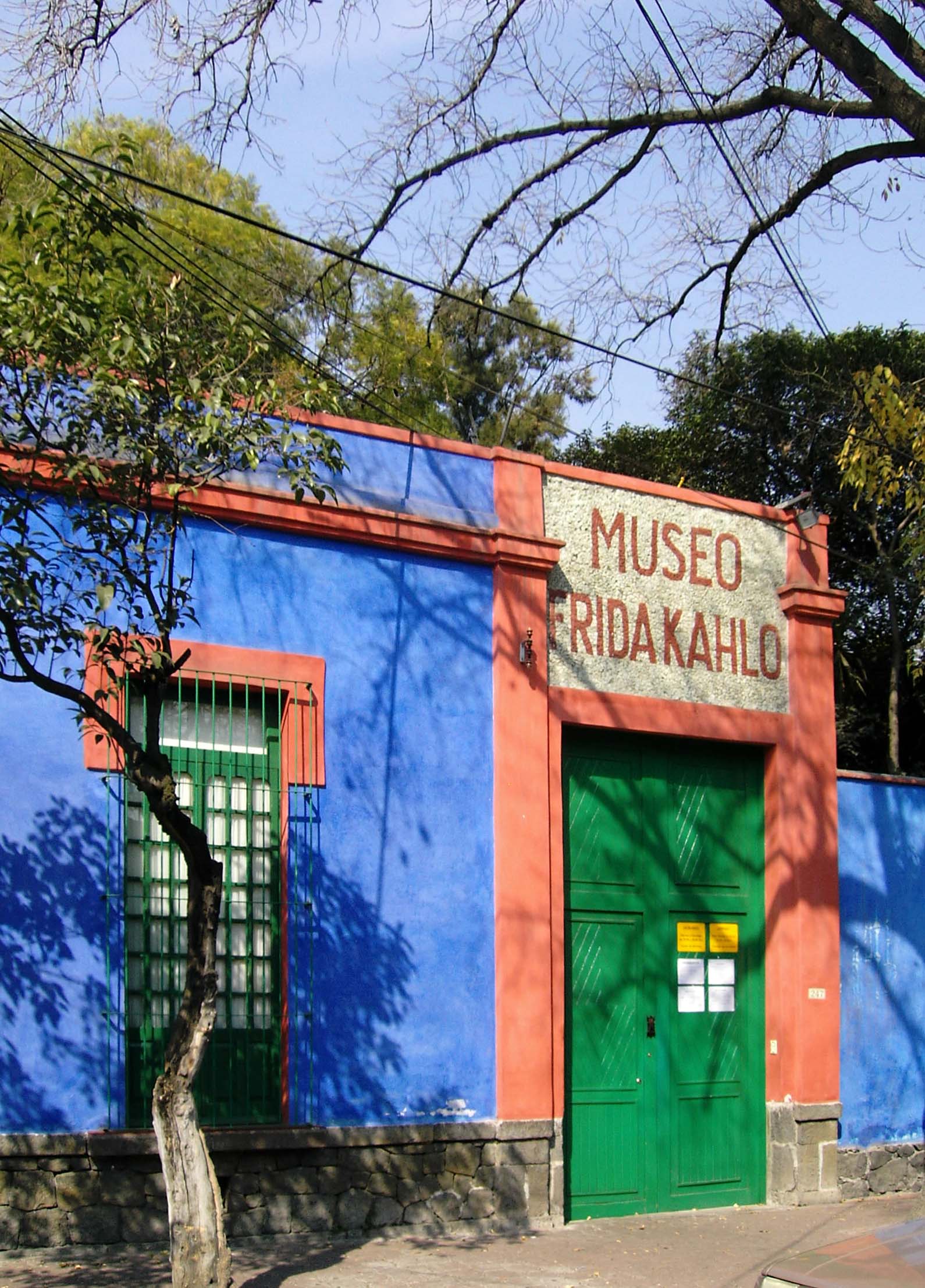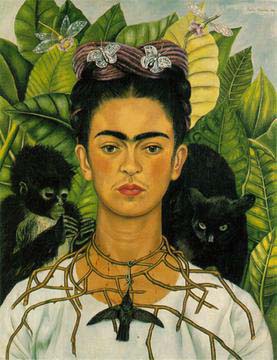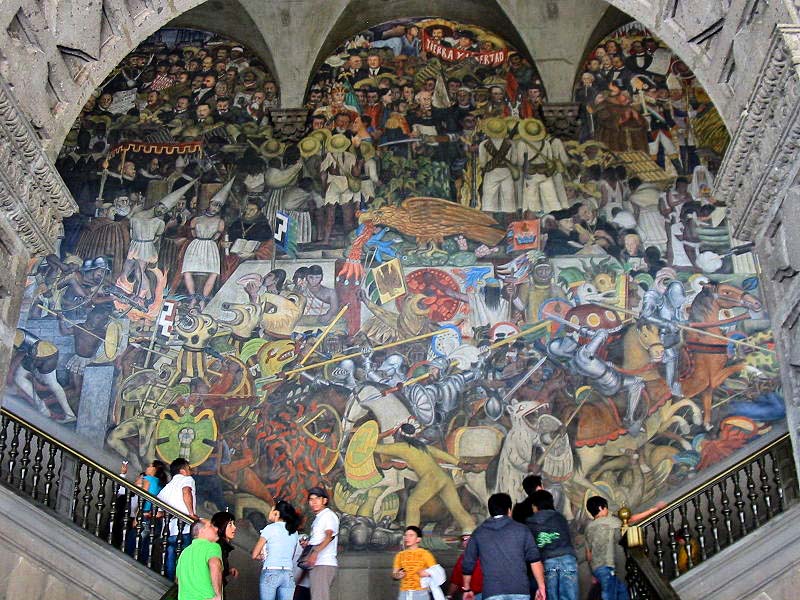- Lifestyle & Sports
- 16 May 24
Frontlines: Edel Meade "Honestly, I had no expectation of finding so many similarities between Irish and Mexican culture"

Will it get better? Well, it’s certainly an experiment worth trying. Thus it was that, with the Irish goddess Brigid in her thoughts, songwriter and composer Edel Meade travelled to Coyoacán, and discovered that we have much more than the Day of the Dead in common with the land of the ever fascinating Frida Kahlo…
It was last September five months to my 40th birthday, when I started thinking about booking a solo trip to Mexico. I was at an intersection in my life, pondering whether to accept a job offer in the US, release a new album, start a PhD or go travelling.
In fact, I had meant to make a trip to Mexico during my six-month Fulbright in California last year. It wouldn’t have been a long journey and I was keen to visit Mexican artist, Frida Kahlo’s former home, and to experience colourful Oaxaca after seeing pictures on somebody’s Instagram. But that opportunity had passed me by.
Now, my indecision being final on the big life questions, I went ahead and booked the flights. I was on my way.
BEE-KEEPING AND MIRACLES
It was late November when I found out that I had been selected for funding under the Brigid1500 scheme to put together a new performance project, based on the theme, ‘Brigid, Gobnait and Sheela-na-gig’.
For the uninitiated, Sheela-na-gigs are stone carvings of an unashamedly explicit nature, ie. women displaying their vulva. They were commonly found in churches in Ireland – ones that were built before the 16th century, that is. Some see them as a protection against evil; another theory suggests they represent a pagan fertility goddess; and a third that they are intended to serve as a warning against lust.
My ‘Brigid, Gobnait and Sheela-na-gig’ project would involve conducting artistic research over several months, weaving together stories and songs from Irish folklore and mythology, and composing a new original song inspired by my research. As Brigid had been the muse for my Brigids And Patricias album, I felt this was an opportune time to shed light on some of the other pre-Christian goddesses and aspects of the divine feminine in Ireland. But would this be feasible alongside my Mexican adventure?
The answer was that I didn’t know. While St. Brigid’s Day is celebrated on February 1, there are many other goddesses/saints with feast days around Imbolc that most people will never have heard of. For example, Lí Bán, Ireland’s ‘mermaid saint’ is celebrated on January 27.
The Annals Of The Four Masters, compiled by Irish friars in the 17th century, tell us that Lí Bán was captured on a beach in Co. Antrim in the year 558 and later baptised (of course!) by St. Comgall, Bishop of Bangor, and became known as St. Muirgen, meaning ‘sea-born’ in Irish. There’s evidence, I was to discover, of mermaid beliefs all over Ireland, including at Kilcooley Abbey in Co. Tipperary and at Clonfert Cathedral in Co. Galway.
St. Gobnait’s feast day is February 11. Pronounced Gub-net, this 6th century goddess is associated with bees, beekeeping and miracles. Her devotees are most commonly found in the Gaeltacht communities of Inisheer (the smallest Aran Island), Dún Chaoin in West Kerry and Ballyvourney in West Cork. I was learning all the time.
 Polaroid PDC 4350
Polaroid PDC 4350FALLEN IRISH HEROES
I flew into Mexico City in mid-February. Coyoacán – or ‘place of the coyotes’ – is a charming bohemian enclave, and one of the oldest neighbourhoods, in Mexico City. I discovered this had been Frida Kahlo’s locale and is still a haven for artists today: it was the ideal place to stay.
While the pollution and the horrendous traffic downtown are the stuff of nightmares, the hummingbirds and yellow butterflies outside my window in Coyoacán were divine gifts from the Aztec or Mayan gods that had led me to Mexico…
I visited Casa Azul, the blue house and home of Frida Kahlo on my birthday. The iconic painter lived here until her death in 1954. I was thrilled to see her workspace, trinkets and personal items up close, as well as the courtyard where she entertained visitors such as George Gershwin, Chavela Vargas and Leon Trotsky.

Certainly Frida took great pride in her cultural identity. She was frequently photographed in distinctive, vibrant, traditional Mexican clothing and gorgeous floral headdresses. She was a woman who refused to conform, expressing herself freely through her art and sexuality.
Her artistic output is truly remarkable, especially considering the horrific injuries and life-long pain she endured following a severe accident in 1925, when she was just 18 years old. In this light, Frida symbolises the strength and tenacity of Latin-American women. Lingering in Casa Azul, the thought occurred to me that she would have got on great with Brigid, Gobnait and Sheela!
While he might be more commonly referred to as ‘Frida Kahlo’s husband’ outside of Mexico, Diego Rivera was arguably more popular than his wife in Mexico and was hugely respected for both his art and his political activism. I loved seeing his powerful large-scale murals throughout the city.
It was fascinating also to see the large, stone monument of Chalchiuhtlicue, the revered Aztec deity associated with rivers, seas, storms and fertility.
Chalchiuhtlicue is patroness of childbirth at the National Anthropology Museum; she once ate the sun and the moon, according to myth; and she is associated with serpents – which brings to mind not just St. Patrick (deemed to have rid Ireland of snakes) but also the San Patricios – a group of mostly Irish immigrants who fought alongside the Mexican Army during the Mexican-American war (1846-1848).
These fallen Irish heroes, I was informed, are honoured by the Mexican government every year with a parade and bagpipe spectacle at Plaza del Batallon de San Patricio in Coyoacán.
WEEPING WOMAN
St. Patrick was a gentleman, according to the song. But the only thing we can say for sure – well, sort of sure – is that he was a Welshman. But I would happen on another intriguing lead. In my drive to find out about Sheela (na gig), I discovered that Sheela’s Day is celebrated in Newfoundland on March 18 every year as a continuation of the St. Patrick’s Day festivities.
Sheela is said to have been the wife of St. Patrick – celibacy was only introduced in the 11th century – and so I was very interested to learn that her feast day occurs immediately prior to the Spring equinox, which is associated with Eostre, another (West Germanic) goddess of Spring and fertility.
Apparently Eostre (the linguistic root of both estrogen and Easter) has been worshipped for thousands of years, but I had never heard of her before. I can’t help but wonder if she could be related to Sheela-na-gig and that this is simply another aspect of the divine feminine…
Honestly, I had no expectation of finding so many similarities between Irish and Mexican culture. Yes, the similarities between Día de los Muertos or Day of the Dead and Samhain/ All Soul’s Day are undeniable, but they kept on coming.
My Oaxacan tour guide, Veronica, asked: “The bogeyman comes from Ireland, no?” I had heard of the bogeyman as a child but had no reason to believe he had Irish roots until I realised “bogey” sounds a lot like the Irish word “púcaí” – mischievous, shape-shifting demons or spirits that it is best to be extremely wary of.
Next, myself and Veronica were exchanging stories about the banshee, who she was already familiar with (!) and La Llorona – the weeping woman said to be heard at rivers across Mexico mourning the children she had drowned after discovering her husband was unfaithful.
In a similar vein, there are wise women and indigenous healers throughout Mexico and Ireland alike – the Mexican María Sabina and the Irish Biddy Early being two of the best known examples.

PLANT ENERGY
The highlight of my trip to Mexico was what is I call my temazcal experience!
A temazcal is a type of sweat lodge – think igloo made with clay instead of ice – which originated with pre-Hispanic indigenous people in Mesoamerica. It’s the setting for a 2,500-year-old ritual which uses a Mayan-Zapotec technique to “illuminate a pathway into your inner self and begin a rebirth of love in your soul.”
Upon arrival to the neighbourhood co-op 12 kilometres outside Mexico City, I was encouraged to walk around the garden barefoot to ground myself in nature and connect with the plants and trees around me. After about 20 blissful minutes in the sun, I returned to the temazcal and drank the ceremonial cacao provided.
Then I got on my hands and knees and crawled into the darkness of the dome formation, along with the Spanish-speaking shaman – and Maria, the interpreter. Wearing just a swimsuit, as instructed, I felt the clay beneath my skin and got accustomed to the darkness around me. I wasn’t remotely scared.
The temazcal is constructed as an imagined womb of Mother Earth. A fire is lit using volcanic rocks and herbs and over the course of a few hours, you work with the plant energy and – calling in family members, ancestors and guides for support – are guided towards releasing ‘limiting’ beliefs while also sweating out toxins that have been holding you back in your life thus far. It is a beautiful, immersive experience and not one that I feel adequately equipped to portray in words.
But I was brought back to those unexpected connections…
At one point during the ritual, I became conscious of the fact that I was lying on my back in the womb of Mother Earth, not quite exposing my vulva but reclining in my Speedo swimsuit with my legs spread as if giving birth. My whole body was covered in organic honey on the outside and inside (I kid you not!) and as I lay in the belly of the earth during Imbolc, I realised that this was an embodiment of Brigid, Gobnait and Sheela of a kind – and depth – that I never, ever could have dreamt up.
It is a memory of Mexico that I will hold in my heart forever. This extraordinary, dynamic country has had a profound impact on me. The indigenous ways are very much present, even if under the radar, and the richness of the culture has been hugely inspiring. I feel more alive than I’ve ever been. Or maybe I’ve just been born again.
• Edel Meade is an award-winning vocalist, composer and performing artist from Co. Tipperary. She will present her new show, ‘Brigid, Gobnait and Sheela-na-gig’ at Riverbank Arts Centre, Newbridge, Co. Kildare on May 22 as part of the Brigid1500 series of events supported by Kildare County Council, weaving together a unique blend of music, stories and songs that draw from Irish history, folklore and mythology as well as her recent travels in Mexico! Tickets available from riverbank.ie.
You can read her report and more in our latest issue of Hot Press:
RELATED

- Lifestyle & Sports
- 23 Jan 24
Acclaimed food trucks, chefs and more – full programme unveiled for The Wonderful Barn events this Saturday

- Lifestyle & Sports
- 19 Dec 25
Tullamore D.E.W. Distillery: Gift an experience that engages every sense
RELATED

- Lifestyle & Sports
- 15 Dec 25
Bohemian FC and KNEECAP team up for new jersey fundraising for ACLAÍ Palestine

- Competitions
- 12 Dec 25
WIN: Lunch For Two From Forge Wood Fired Pizza

- Lifestyle & Sports
- 12 Dec 25
Minding Creative Minds to hold December meet and greet

- Lifestyle & Sports
- 10 Dec 25
Ticketmaster Gift Card: Give The Gift Of Live

- Lifestyle & Sports
- 09 Dec 25



